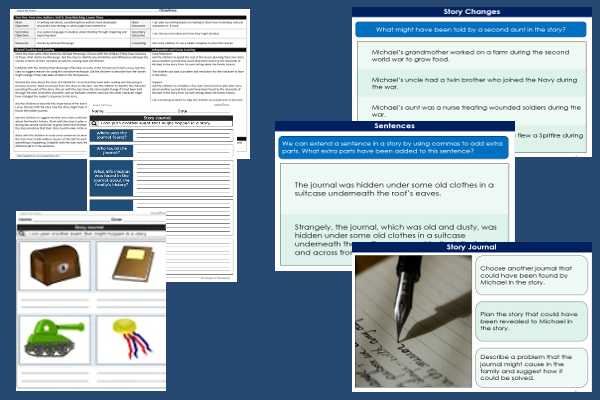Lesson Three – Story Planning

This English teaching pack for Key Stage Two gets the children to select and use information about another journal that could have been discovered which can illustrate some of the history of a family in a narrative story.
The class can suggest and record a problem that the journal could cause in a family and how the conflict might be resolved by the end of the narrative plot.
Download this teaching pack including a lesson plan, classroom activities and an interactive presentation to select and use information about another journal that could have been discovered which can illustrate some of the history of a family in a narrative story
Activities in this teaching pack include a worksheet for core and extension ability levels to record ideas to show the sequence of events that might happen when a journal of family history has been discovered and a template to show the sequence of events by recording picture illustrations and matching sentences.
The interactive presentation gets the children to explore how to plan a story to illustrate what might happen when a journal is discovered by members of a family.
This lesson is part of an English scheme of work to get the children to plan and write a story using different narrative techniques, identify the meanings of words that are homonyms and practise extending sentences by using commas to add extra words and phrases. There are teaching activities for shared learning, differentiated worksheets to support independent learning and interactive presentations to introduce concepts and key skills.
-

Determinant Lists
Explain and model how to make lists of objects used and found in different locations to match the correct determinants of a and an
-

English SPAG Assessment
Assess abilities in composing sentences for fiction and non-fiction using the correct spellings, punctuation marks and grammar vocabulary phrases
-

Maths Arithmetic Assessment
Assess abilities in solving arithmetic number problems for addition, subtraction, multiplication and division when working with informal and formal written calculations
-

Environment
Identify and describe some of the special landscapes and locations that can be found in the world and reflect on how they can be protected and preserved for the future
